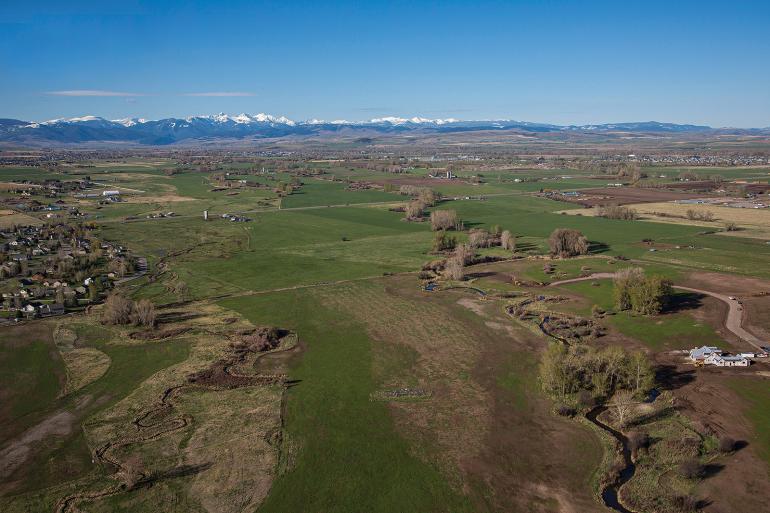Easy Does It
Conservation easements in the Gallatin Valley.
Once upon a time in the Gallatin Valley, wildlife outnumbered humans, and now-ephemeral creeks flowed year-round. Agriculture was the way of the land. But, not too long ago, its human inhabitants began rapidly growing in number and demanding more of the land for themselves. Change was inevitable. Roads were extended, buildings erected, and rangelands developed. Change in the valley attracted people who saw the land differently than the older population. Its culture, wildlife, and natural resources became more and more displaced. But change doesn’t have to dissolve the valley’s identity.
Conservation easements are helping to preserve that which remains. These are real estate transactions where a separate entity, such as the Gallatin Valley Land Trust (GVLT), is granted a landowner’s right to develop the land. The value of the development rights determines the cost of the easement, which can be quite the price tag in a desirable place like the Bozeman area. But the land trust doesn’t own the land—the landowner still owns it. Rather the easement becomes a part of the title to the land, so if the property is sold to another owner, the conservation easement goes with it. Forever.
In the ’90s, around the time differing values were becoming more apparent in the valley’s population, major steps toward prioritizing wild places and sustainability were also taking root. That’s when the county laid the groundwork for its Opens Lands Board, and GVLT began its work as a partner in conservation easements. Since the early days of these conservation-minded programs, the Lands Board and GVLT have helped secure conservation easements on over 50,000 acres in Gallatin County. Today, thanks to the work of these organizations and many others, more than 130,000 total acres in the county are under the protection of easements. This doesn’t necessarily mean improved public access on the land, however. Often, the value of the resource or the environment is prioritized over peoples’ personal use of the land, and many easements are valued simply because they protect an unperturbed landscape.
One such easement is the 300-acre property of Bos Hay & Grain Farm in the Gooch Hill area. The farm cultivates hay on active, agricultural land, and then feeds it to livestock throughout the valley. GVLT and the Montana Land Reliance (MLR) own a patchwork of conservation easements around the Bos Hay & Grain land as well. In total, these easements add up to about 3,400 acres of land preserved for agricultural use and wildlife habitat.
A range of other reasons can make land suitable for conservation easements as well. North of the Gooch Hill area, near Churchill, a dryland farm frequently used by wintering elk was recently incorporated into a 500-acre easement for the purpose of protecting critical wildlife habitat. And, last year, GVLT and the Open Lands Program worked together to purchase another 12 acres for Peet’s Hill Community Trail, smack-dab in the middle of Bozeman: an easement desirable for its community value. But they come at a high cost.
A land trust doesn’t own the land—the landowner still owns it. Rather the easement becomes a part of the title to the land, so if the property is sold to another owner, the conservation easement goes with it. Forever.
Securing conservation easements in the Gallatin Valley often takes multiple financial partners, and the county is usually one of them. Gallatin County residents pay into the county’s Open Lands Program through property taxes. In 2022, $1.7 million in taxpayer money went toward the program. Every year, the Open Lands Board selects conservation easements to help fund, typically chipping in about a quarter of the cost for each. All this is done through public process, meaning there are regular public meetings and comment periods. However, according to the county’s Open Lands Program Coordinator, Sean O’Callaghan, the board sees more applications than it has funding for. This coming year, the board has already allocated over $1.8 million to four easements that will secure another 3,700 acres in the valley as open lands.
The Open Lands Program recently marked its 60th conservation project, and there are hopefully many more to come. The Gallatin Valley is ripe with potential for Texas-style urban sprawl, and conservation easements are yet another way that as the Bozeman area grows, the Gallatin Valley can retain at least some of its original character, and thus still feel like Montana.












